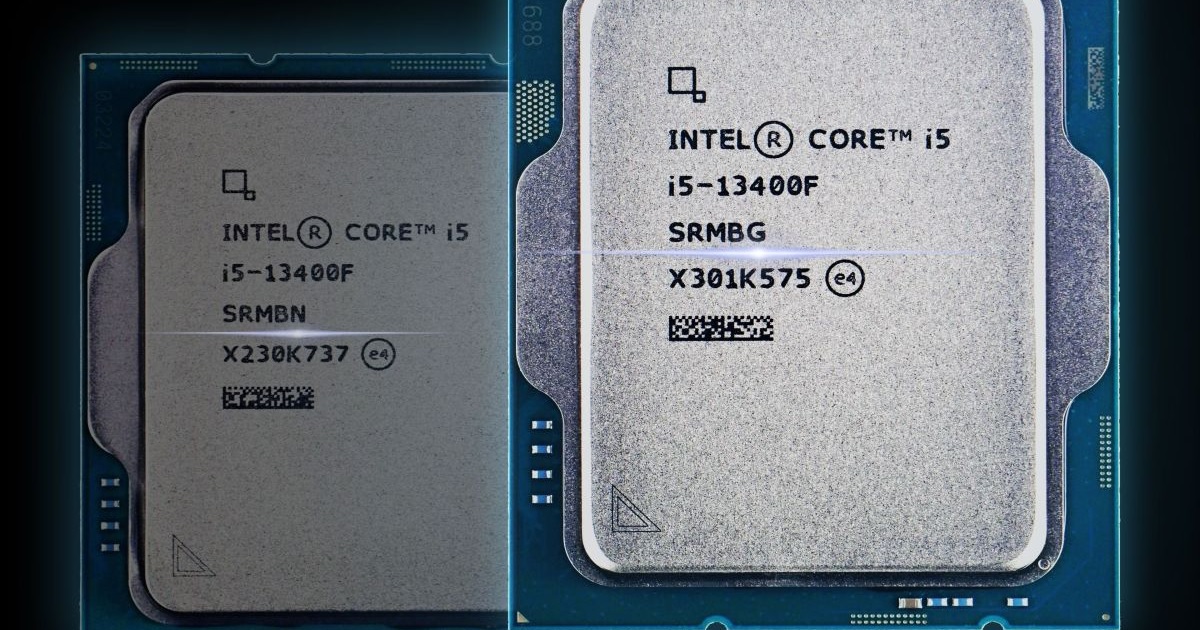I'm curious what this forum thinks of the increasing reports of "13th and 14th gen Core i9 stability issues" that are appearing in the media. I've compiled a few links below talking about different aspects of this issue.
The overall issue manifests as spontaneous rebooting, blue screens, or apps that crash to desktop at random intervals; and particularly hard hit seem to be software that does decompression - whether it's a game doing texture "stuff", or 7-zip or those types of applications. Intel has released updated power / voltage recommendations for motherboard vendors, but that doesn't appear to have addressed the issue.
Intel is also reported to be fielding a very high level of RMA for these processors; and it's specifically the i9 (highest clocked, highest core count) processors. The 12th gen does not appear to be affected, and the 13th and 14th gen i7s only seem to be mildly affected (not nearly as clearly as the i9). In 13th and 14th gen, the i7 is lower clocked and has 8 performance + 8 efficient cores, while the i9s are 8+16.
Informational/source links are below. I've summarized take-aways for each link:
Game Developer(s) indicating that >80% of all reported crashes in their games occur on these specific processors:

 www.theregister.com
www.theregister.com

 alderongames.com
alderongames.com
Level1Techs: Uncovered a lot of data from those who host game servers that show the servers are very unstable on the i9 processors, losing customers, and causing game hosts to drop the equipment for AMD. Game Servers love single threaded performance which is why they've been using Core i9. Worth noting is they tend to use "W" / workstation chipsets, that will not expose these processors to very high power limit levels like consumer boards. He also cited warranty costs going up 8x for servers based on Core i9 vs. a few months ago. L1T dove into a lot of publicly available logging information to verify high failure rates.
GamersNexus: Discussion with Level1Techs, Steve (owner) from Gamers Nexus indicated he thinks he knows what the problem is, and he thinks Intel does too, but he isn't saying more. They strongly implied the fix needs to be done at the hardware level.
Moore's Law is Dead: Cites several sources for increasing RMAs on these processors. Tom (owner) also stated that the problem is some combination of the # of cores on the ring bus (Core i9 is 8+16), and other things causing premature failure somewhere in the cache/memory functional area.
Igors Labs: Quoting an Intel doc: Failure Analysis (FA) of 13th and 14th Generation K SKU processors indicates a shift in minimum operating voltage on affected processors resulting from cumulative exposure to elevated core voltages. Intel® analysis has determined a confirmed contributing factor for this issue is elevated voltage input to the processor due to previous BIOS settings which allow the processor to operate at turbo frequencies and voltages even while the processor is at a high temperature. Previous generations of Intel® K SKU processors were less sensitive to these type of settings due to lower default operating voltage and frequency.

 www.igorslab.de
www.igorslab.de
The overall issue manifests as spontaneous rebooting, blue screens, or apps that crash to desktop at random intervals; and particularly hard hit seem to be software that does decompression - whether it's a game doing texture "stuff", or 7-zip or those types of applications. Intel has released updated power / voltage recommendations for motherboard vendors, but that doesn't appear to have addressed the issue.
Intel is also reported to be fielding a very high level of RMA for these processors; and it's specifically the i9 (highest clocked, highest core count) processors. The 12th gen does not appear to be affected, and the 13th and 14th gen i7s only seem to be mildly affected (not nearly as clearly as the i9). In 13th and 14th gen, the i7 is lower clocked and has 8 performance + 8 efficient cores, while the i9s are 8+16.
Informational/source links are below. I've summarized take-aways for each link:
Game Developer(s) indicating that >80% of all reported crashes in their games occur on these specific processors:

Intel accused of selling ‘defective’ Raptor Lake CPUs
High-end processor instability headaches, failures pushed one studio to switch to AMD

Intel is selling defective CPUs - Alderon Games
We have been encountering significant problems with Intel CPU stability. Despite all released microcode, BIOS, and firmware updates, the problem remains unresolved.
Level1Techs: Uncovered a lot of data from those who host game servers that show the servers are very unstable on the i9 processors, losing customers, and causing game hosts to drop the equipment for AMD. Game Servers love single threaded performance which is why they've been using Core i9. Worth noting is they tend to use "W" / workstation chipsets, that will not expose these processors to very high power limit levels like consumer boards. He also cited warranty costs going up 8x for servers based on Core i9 vs. a few months ago. L1T dove into a lot of publicly available logging information to verify high failure rates.
GamersNexus: Discussion with Level1Techs, Steve (owner) from Gamers Nexus indicated he thinks he knows what the problem is, and he thinks Intel does too, but he isn't saying more. They strongly implied the fix needs to be done at the hardware level.
Moore's Law is Dead: Cites several sources for increasing RMAs on these processors. Tom (owner) also stated that the problem is some combination of the # of cores on the ring bus (Core i9 is 8+16), and other things causing premature failure somewhere in the cache/memory functional area.
Igors Labs: Quoting an Intel doc: Failure Analysis (FA) of 13th and 14th Generation K SKU processors indicates a shift in minimum operating voltage on affected processors resulting from cumulative exposure to elevated core voltages. Intel® analysis has determined a confirmed contributing factor for this issue is elevated voltage input to the processor due to previous BIOS settings which allow the processor to operate at turbo frequencies and voltages even while the processor is at a high temperature. Previous generations of Intel® K SKU processors were less sensitive to these type of settings due to lower default operating voltage and frequency.

Intel comments internally on the “13th and 14th Generation K SKU Processor Instability Issue” and finally brings a comprehensive update of its own investigation (Leak) | igor´sLAB
What do you think it means when Intel provides a document with the title “Title Enhanced Thermal Velocity Boost (eTVB) May Miscalculate Frequency Limits” and the subline “Issue Description An…

